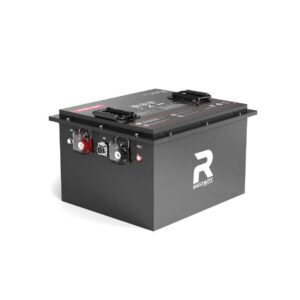How to Choose the Best Auto Battery Charger for Your Vehicle?
Auto battery chargers restore power to dead or weak car batteries using controlled electrical currents. They come in various types, including trickle, smart, and jump starters, each suited for specific needs. Key factors when choosing include battery type (lead-acid, AGM, lithium), charging speed, safety features, and compatibility with your vehicle’s voltage system.
What Are the Different Types of Auto Battery Chargers?
Auto battery chargers include trickle chargers for slow, steady charging; smart chargers with automatic voltage regulation; jump starters for instant power; and solar chargers for eco-friendly use. Maintenance chargers preserve battery health during storage, while portable units offer on-the-go convenience. Choose based on battery type, charging needs, and vehicle compatibility.

How Do Smart Chargers Differ from Traditional Models?
Smart chargers automatically adjust voltage and current to prevent overcharging, optimize charging stages (bulk, absorption, float), and diagnose battery health. Traditional chargers lack these features, requiring manual monitoring. Smart models enhance safety, extend battery lifespan, and are ideal for modern vehicles with sensitive electronics.
Modern smart chargers employ microprocessors to analyze battery chemistry in real time. For lithium-ion batteries, they maintain precise voltage thresholds (14.4V for absorption, 13.6V for float), while lead-acid models receive pulse modulation to combat sulfation. Many feature temperature compensation sensors that adjust charging rates based on ambient conditions. Unlike basic chargers that deliver constant current, smart units transition between three phases: rapid charging (0-80% capacity), topping mode (80-100%), and maintenance phase. This multi-stage approach prevents electrolyte loss and plate corrosion.
| Feature | Smart Charger | Traditional Charger |
|---|---|---|
| Voltage Regulation | Automatic | Manual |
| Charge Stages | 3-6 phases | Single phase |
| Battery Diagnostics | Yes | No |
Why Is Voltage Compatibility Critical for Battery Chargers?
Using an incompatible voltage charger can damage the battery or electrical system. Most cars use 12V batteries, while heavy-duty vehicles may require 24V systems. Always match the charger’s output voltage to the battery’s specifications. Multi-voltage chargers offer flexibility but prioritize models with clear labeling and auto-detection features.
What Safety Features Should a Reliable Charger Have?
Look for reverse polarity protection, spark-proof connections, overcharge protection, and thermal sensors. Advanced models include short-circuit prevention and automatic shutoff. These features minimize risks of explosions, fires, or battery damage, especially when charging unattended or in extreme temperatures.
Premium chargers now integrate multi-layered safety protocols. Reverse polarity detection uses audible alarms and LED indicators to warn of incorrect cable connections. Thermal runaway prevention monitors internal temperatures, reducing current flow if components exceed 140°F (60°C). For lithium batteries, chargers with built-in battery management system (BMS) communication can detect individual cell imbalances. Industrial-grade models meet MIL-STD-810G standards for vibration resistance and IP65 ratings for water/dust protection. Always verify certifications like ETL or SAE J537 to ensure compliance with automotive safety regulations.
| Safety Feature | Protection Type |
|---|---|
| Reverse Polarity | Prevents damage from reversed clamps |
| Overcharge Protection | Limits voltage to 14.7V max |
| Spark Arrestor | Ensures safe connection in flammable environments |
How Can Chargers Extend the Lifespan of Your Battery?
Regular maintenance charging prevents sulfation (lead sulfate buildup) in lead-acid batteries. Smart chargers use float modes to maintain optimal charge levels during storage. Avoid deep discharges and extreme temperatures. Desulfation modes in premium chargers revive aged batteries by breaking down sulfate crystals.
Are Solar-Powered Chargers Effective for Automotive Use?
Solar chargers are eco-friendly and ideal for maintaining batteries in rarely used vehicles. They rely on sunlight, making them slower than AC-powered units. Effectiveness depends on panel wattage (10W–100W) and sunlight exposure. Best suited for trickle charging in garages or RVs, not for rapid jumps in emergencies.
What Are the Hidden Costs of Cheap Battery Chargers?
Low-cost chargers often lack safety features, risking battery damage or failure. They may overcharge, undercharge, or use inferior materials prone to overheating. Hidden costs include frequent replacements, reduced battery lifespan, and potential vehicle repairs. Invest in chargers with UL certification or CE compliance for long-term reliability.
“Modern chargers aren’t just about reviving dead batteries—they’re diagnostic tools. Smart chargers with Bluetooth connectivity can sync to your phone, track battery health over time, and even predict failures. For EVs, bidirectional chargers will soon let vehicles power homes during outages, revolutionizing energy management.”
Choosing the right auto battery charger involves balancing type, safety, and compatibility. Smart chargers offer advanced protection and diagnostics, while solar options provide eco-friendly maintenance. Prioritize certified models with robust safety features to avoid hidden costs and ensure long-term battery health.
FAQs
- Can I Use a Car Charger for a Marine Battery?
- Yes, if the charger supports AGM or deep-cycle batteries. Marine batteries require chargers with higher surge capacity for cranking amps.
- How Long Does It Take to Charge a Dead Battery?
- A fully dead 12V battery takes 4–12 hours, depending on charger amperage. A 10-amp charger typically needs 6–8 hours.
- Can Chargers Recycle Lithium-Ion Car Batteries?
- No, lithium-ion batteries require specialized chargers with precise voltage control. Standard lead-acid chargers can damage them.
